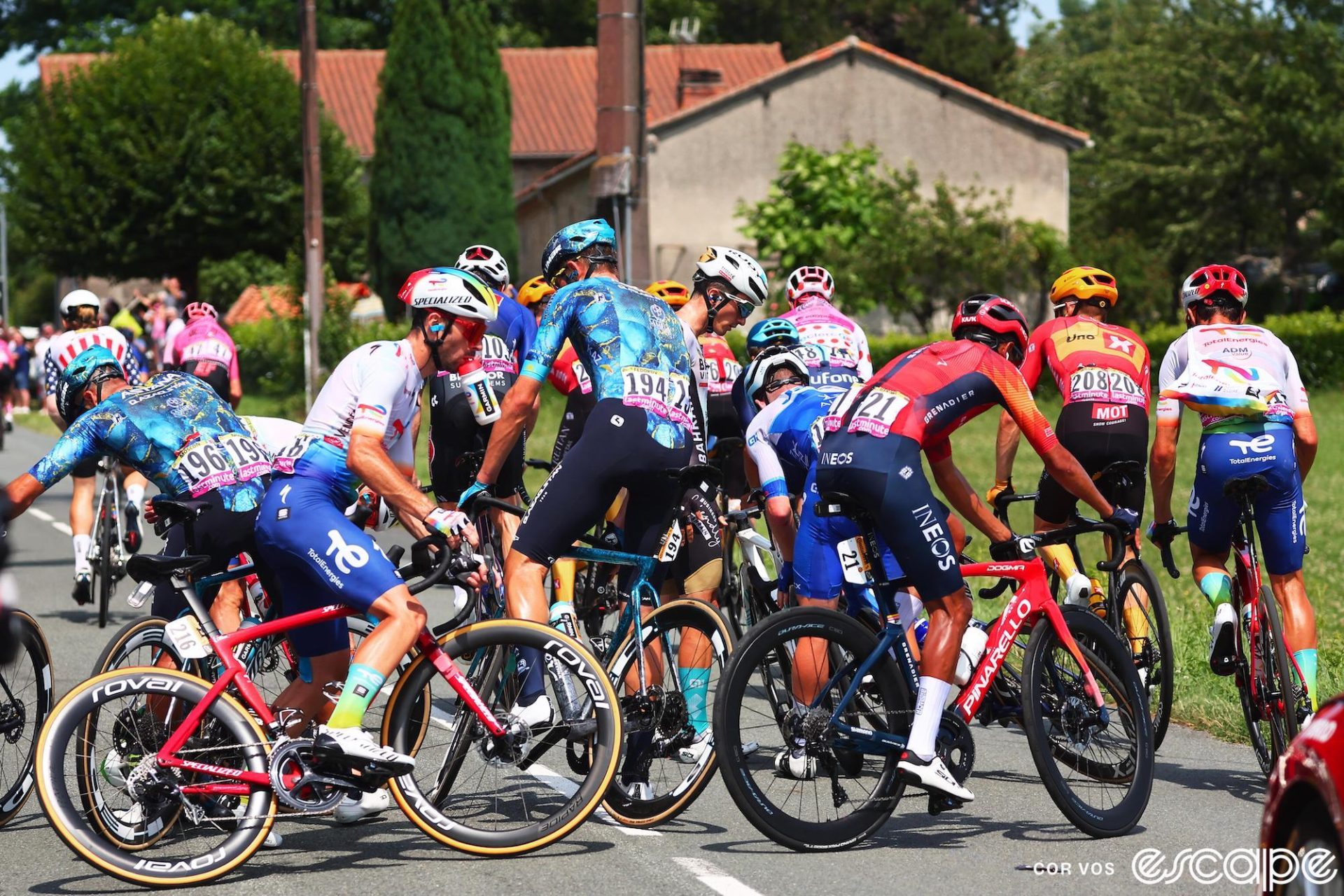It’s been a safe week, by Tour de France standards. No massive crashes, no high-speed multi-rider pileups. No 40 riders sliding along a dead-straight road for inexplicable reasons. We’ve seen a few unfortunate solo efforts, and of course, the topple that took out Mark Cavendish, but on the whole, the race has been remarkably crash-free.
Why?
Much of it, according to those inside the peloton, comes down to this Tour’s unique route selection, and specifically, three important factors: An early GC day, a difficult opening two days, and hard stages peppered every few days through the whole first week.
Crashes have many causes, but a few factors increase their likelihood. The biggest is when lots of riders want to be in the same place at once, and are fresh enough to try to get there. Route selection, therefore, can have a huge impact on crash rates.
It breaks down like this. The first stage, a tricky and lumpy route starting and finishing in Bilbao, served to separate the GC contenders from the rest. By the end of that stage, nearly two-thirds (115 of 175 riders) were already more than five minutes back. Every single one of those riders no longer had any ambitions of snagging a sneaky shot at the yellow jersey.
“Normally, we have these really pan-flat courses in the first couple of days, and everyone’s on edge, everyone’s fresh,” Israel-Premier Tech’s Mike Woods said. Everybody has a chance, or is working for a leader who has a chance, of taking yellow. “And because of that, they’re just more antsy.”
Antsy is bad. Year after year, we hear from riders that crashes in the first week are caused more by stress than actual danger; everyone’s shoving forward constantly, and the peloton doesn’t flow as it normally would. Often, these crashes happen on wide-open roads. Too many riders are taking too many risks, trying to get a tiny edge or move up in the bunch.
In short, putting most of the peloton in its place (that’d be five minutes back) on day one decreased risk-taking and de-stressed the group as a whole. Sprinters were never in with a shot at yellow in this Tour. Nor were most breakaway specialists. “You just can feel it in the group,” Woods said. It’s more relaxed and more safe.

The next factor: fatigue. Specifically, the arrangement of hard and easy stages so that the easy stages were effectively used as rest days by most of the peloton. The Cavendish crash, for example, could have been catastrophic at the high speeds that are normal in the first week of the Tour. But the peloton was taking the slight uphill at a relaxed 30 kph, and most riders could simply brake and avoid going down. Lower speeds are (in general) safer, because crashes are more easily isolated within the peloton.
“I enjoyed it a lot more compared to what we had last year, where it was just full gas every day,” said DSM-Firmenich’s Kevin Vermaerke said of the first week. “I really enjoyed it.”
Vermaerke was crashed out on stage 8 of last year’s Tour, so perhaps it’s not so surprising that he’s liking this year a bit more. But I don’t think I’ve ever had a rider tell me they enjoyed the first week of the Tour de France, until Vermaerke. Because this Tour alternated between hard climbing or breakaway days and sprint stages, the sprint stages were particularly mellow – with tired legs and more difficult stages looming, the peloton uses them as a much-needed break.
The Nogaro finish of stage 4 was the source of the only string of crashes so far this year, and was proof that fresh legs can work both ways. In the motor circuit finale, fresh legs and wide corners contributed to an extra layer of chaos as more riders were able to fight for good positions. But for the most part, fatigue results in de facto rest days, which lower stress in the peloton and seem to result in fewer crashes.
Part of it is luck, of course. A touch of wheels, a bump of handlebars, that’s all it takes to send dozens of riders sprawling. But smart course design, keeping in mind the way the peloton operates and the incentives that push it one way or another, certainly doesn’t hurt.
“It’s been a lot safer of a Tour than in the past years,” Woods confirmed. “Sure, there are still crashes, but there haven’t been those massive pile ups that we’ve seen yet. Just knock on wood, please.”
Did we do a good job with this story?

